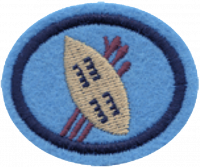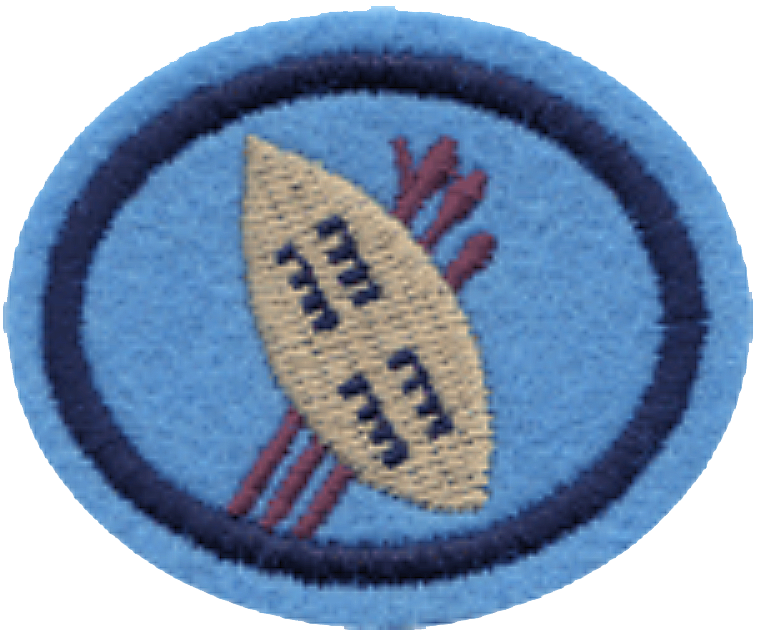Difference between revisions of "AY Honors/African Lore/Answer Key/es"
(Created page with "{{clear}}") |
|||
| (48 intermediate revisions by 3 users not shown) | |||
| Line 1: | Line 1: | ||
| − | < | + | {{HonorSubpage}} |
| + | <section begin="Body" /> | ||
| + | {{ansreq|page={{#titleparts:{{PAGENAME}}|2|1}}|num=1}} <!--T:1--> | ||
<noinclude></noinclude> | <noinclude></noinclude> | ||
| − | + | <!-- 1. Ser capaz de nombrar y localizar al menos 10 diferentes tribus africanas de la actualidad y decir varias características de cada una. --> | |
| − | + | Las respuestas para el requisito dos incluyen información acerca de la ubicación de las tribus descritas. Le sugerimos que consulte un mapa de África y, utilizando la información que se presenta a continuación, ubique las áreas donde se encuentran hoy las diez tribus. El requisito dos también proporciona muchas características sobresalientes de las tribus descritas. | |
| − | |||
| − | |||
| − | |||
| − | |||
| − | |||
| − | |||
| − | |||
| − | |||
| − | ==2. Hacer lo siguiente:== | + | <noinclude></noinclude>{{CloseReq}} <!-- 1 --><noinclude></noinclude> |
| − | + | <noinclude></noinclude> | |
| + | {{ansreq|page={{#titleparts:{{PAGENAME}}|2|1}}|num=2}} | ||
| + | <noinclude></noinclude> | ||
| + | <!-- 2. Hacer lo siguiente: --> | ||
| + | <noinclude></noinclude> | ||
| + | {{ansreq|page={{#titleparts:{{PAGENAME}}|2|1}}|num=2a}} <!--T:2--> | ||
| + | <noinclude></noinclude> | ||
| + | Hay miles de tribus en África y no pretendemos describirlas todas. Más bien, presentaremos una pequeña cantidad de las tribus más grandes aquí, u aun así, no con mucho detalle. Si una tribu africana que no se describe aquí le interesa, le recomendamos que la investigue. Si lo desea, puede agregar su investigación a esta página web. | ||
| − | + | <noinclude></noinclude>{{CloseReq}} <!-- 2a --><noinclude></noinclude> | |
| − | + | <noinclude></noinclude> | |
| − | == | + | {{ansreq|page={{#titleparts:{{PAGENAME}}|2|1}}|num=2b}} <!--T:3--> |
| − | + | <noinclude></noinclude> | |
| − | |||
| − | |||
| − | |||
| − | |||
| − | |||
| − | |||
{{clear}} | {{clear}} | ||
| Line 30: | Line 25: | ||
{{clear}} | {{clear}} | ||
| − | {{clear}} | + | {{clear}} |
{{clear}} | {{clear}} | ||
| Line 54: | Line 49: | ||
{{clear}} | {{clear}} | ||
| − | {{clear}} | + | {{clear}} |
{{clear}} | {{clear}} | ||
| Line 66: | Line 61: | ||
{{clear}} | {{clear}} | ||
| − | {{clear}} | + | {{clear}} |
{{clear}} | {{clear}} | ||
| Line 72: | Line 67: | ||
{{clear}} | {{clear}} | ||
| − | {{clear}} | + | {{clear}} |
| + | |||
| + | {{clear}} | ||
{{clear}} | {{clear}} | ||
| Line 84: | Line 81: | ||
{{clear}} | {{clear}} | ||
| − | {{clear}} | + | {{clear}} |
{{clear}} | {{clear}} | ||
| Line 143: | Line 140: | ||
{{clear}} | {{clear}} | ||
| + | |||
| + | {{clear}} | ||
{{clear}} | {{clear}} | ||
| Line 186: | Line 185: | ||
{{clear}} | {{clear}} | ||
| − | {{clear}} | + | {{clear}} |
{{clear}} | {{clear}} | ||
| Line 198: | Line 197: | ||
{{clear}} | {{clear}} | ||
| − | {{clear}} | + | {{clear}} |
{{clear}} | {{clear}} | ||
| Line 243: | Line 242: | ||
{{clear}} | {{clear}} | ||
| − | {{clear}} | + | {{clear}} |
{{clear}} | {{clear}} | ||
| Line 295: | Line 294: | ||
{{clear}} | {{clear}} | ||
| − | + | {{clear}} | |
| − | + | {{clear}} | |
| − | + | {{clear}} | |
| − | + | {{clear}} | |
| − | + | {{clear}} | |
| − | + | {{clear}} | |
| − | + | {{clear}} | |
| − | {{clear}} | + | {{clear}}{{clear}} |
{{clear}} | {{clear}} | ||
| Line 325: | Line 324: | ||
{{clear}} | {{clear}} | ||
| − | ==3. | + | <noinclude></noinclude>{{CloseReq}} <!-- 2b --><noinclude></noinclude> |
| + | <noinclude></noinclude>{{CloseReq}} <!-- 2 --><noinclude></noinclude> | ||
| + | <noinclude></noinclude> | ||
| + | {{ansreq|page={{#titleparts:{{PAGENAME}}|2|1}}|num=3}} <!--T:153--> | ||
| + | <noinclude></noinclude> | ||
| + | <!-- 3. Tell an African folk story bringing out its moral. --> | ||
| + | |||
| + | {{clear}} | ||
{{clear}} | {{clear}} | ||
| − | {{clear}} | + | {{clear}} |
{{clear}} | {{clear}} | ||
| + | <noinclude></noinclude>{{CloseReq}} <!-- 3 --><noinclude></noinclude> | ||
| + | <noinclude></noinclude> | ||
| + | {{ansreq|page={{#titleparts:{{PAGENAME}}|2|1}}|num=4}} <!--T:158--> | ||
| + | <noinclude></noinclude> | ||
| + | <!-- 4. Make a collection of at least 15 objects manufactured by African tribes (other than your own). --> | ||
{{clear}} | {{clear}} | ||
| − | + | <noinclude></noinclude>{{CloseReq}} <!-- 4 --><noinclude></noinclude> | |
==Referencias== | ==Referencias== | ||
<noinclude></noinclude> | <noinclude></noinclude> | ||
| − | + | {{CloseHonorPage}} | |
Latest revision as of 17:55, 25 July 2022
Nivel de destreza
1
Año
2001
Version
05.12.2025
Autoridad de aprobación
División Norteamericana
1
Ser capaz de nombrar y localizar al menos 10 diferentes tribus africanas de la actualidad y decir varias características de cada una.
Las respuestas para el requisito dos incluyen información acerca de la ubicación de las tribus descritas. Le sugerimos que consulte un mapa de África y, utilizando la información que se presenta a continuación, ubique las áreas donde se encuentran hoy las diez tribus. El requisito dos también proporciona muchas características sobresalientes de las tribus descritas.
2
2a
Hay miles de tribus en África y no pretendemos describirlas todas. Más bien, presentaremos una pequeña cantidad de las tribus más grandes aquí, u aun así, no con mucho detalle. Si una tribu africana que no se describe aquí le interesa, le recomendamos que la investigue. Si lo desea, puede agregar su investigación a esta página web.
2b
- i. Los hábitos alimenticios
- ii. Ceremonia de iniciación
- iii. Médicos tradicionales y yerbateros
- iv. Condiciones de vida y cultos
- v. Educación
- vi. Entierros
- vii. Dinero
- iix. Vestido
- ix. Industria
3
4


